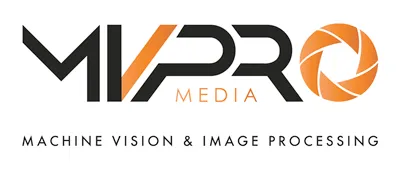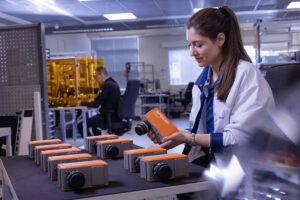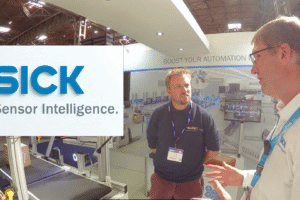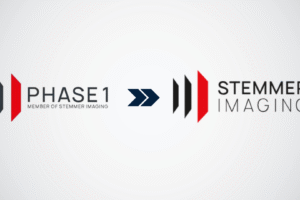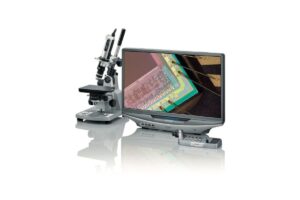Mark Williamson, European Editor at Large writes here for the January issue on the future of Machine Vision looking to 2025.
In November, the VDMA Machine Vision Association convened its members assembly in conjunction with the broader VDMA Robotics and Automation group. A prominent topic of discussion during informal sessions was the potential resurgence of growth in the industry in 2025.

The VDMA offers a valuable market statistics service, accessible to any European trading company that contributes data, in exchange for receiving anonymized market trend insights. Over my nine-year tenure on the board, the industry has experienced a robust +9% CAGR growth. Progress was steady until the onset of the 2020 pandemic, which introduced significant volatility. Despite the broader economic disruptions caused by COVID-19, European machine vision companies experienced only a -4% revenue decline in 2020. This limited impact was partly due to the heightened demand for machine vision used in logistics infrastructure, driven by the surge in online shopping as people stayed at home.
The machine vision industry witnessed a substantial recovery in 2021, with a growth rate of 17%, followed by an 11% increase in 2022. This recovery was fuelled not only by the general resurgence of demand, but also the growth in medical testing for SARS, and larger companies increasing their component inventories to mitigate the effects of the growing silicon chip shortage. This shortage was exacerbated by the significant shifts in demand caused by COVID-19, as more individuals worked or stayed at home, leading to increased demand for consumer electronics such as laptop’s and gaming consoles along with the explosive adoption of video conferencing driving the need for rapidly expanded data centres, all of which required more silicon chips. Additionally, a strained supply chain due to post-COVID staffing shortages further intensified component availability.
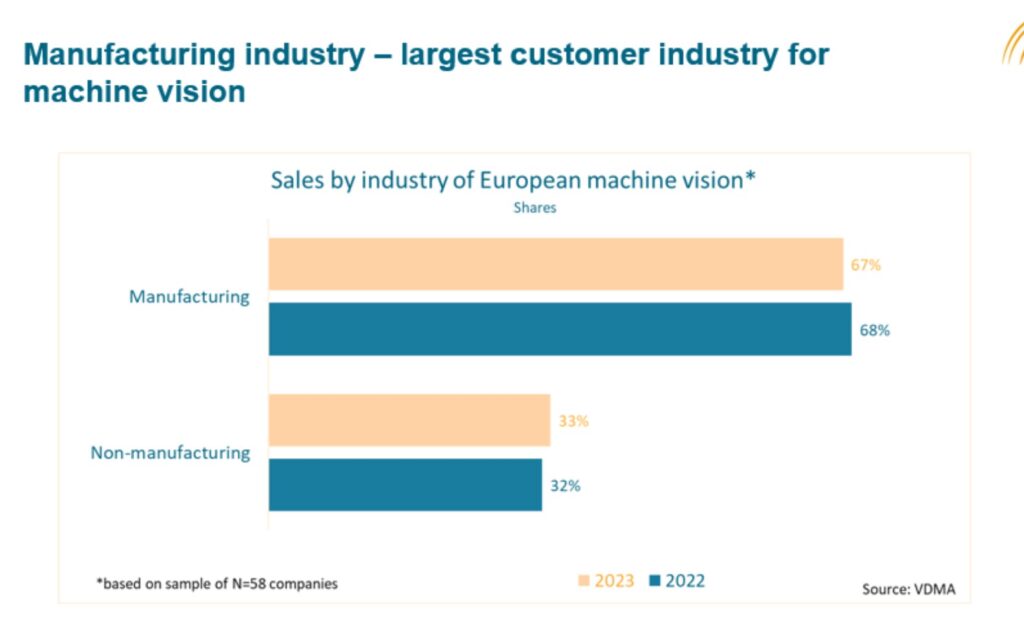
In the machine vision sector, even the most reliable component suppliers faced delivery challenges. As major corporations secured all available silicon foundry capacity, there were numerous reports of critical component orders being cancelled, delayed, or devices being completely discontinued overnight. This uncertainty prompted OEMs utilizing machine vision technology to stockpile vision components globally to ensure production continuity. Machine vision component companies redirected R&D resources from new product development to redesign existing products to accommodate available silicon, an effort that has seen reduced new product innovation in the last year or so.
In 2022, supply chain shortages contributed to rising inflation, prompting interest rate hikes to control prices. This, coupled with the destabilizing effects of global conflicts, led to reduced or delayed capital equipment investments, resulting in decreased demand of machine vision systems.
The machine vision industry can be divided into two segments: components and systems, with components generally being supplied to system builders. The decline in capital equipment demand led to a -5% reduction in systems revenue in 2023. As many systems businesses had stockpiled components and the Chinese market which had been a recent growth market, softened, the machine vision components sector experienced a more severe
-15% revenue drop, resulting in an overall market contraction of -7% for 2023.
In April 2024, the industry outlook was optimistic, with expectations of recovery in the latter part of the year, projecting an expected flat year. However, the anticipated late-year growth did not materialize, leading to a projected overall -10% contraction in 2024, with systems moving into positive territory and components struggling more severely.
Looking ahead to 2025, the sentiment among industry leaders at the VDMA members assembly is one of cautious optimism. The decline has stopped and the focus is on when the recovery will commence. While sentiment is generally positive, recent monthly reports have shown increased enquiries and a wider variance between contributors than has typically been seen previously, likely due to the specific markets being served and how these markets are coming back to growth. In its latest meeting, the VDMA MV board projected another flat year for 2025, although opinions varied significantly. My intuition suggests a modest return to growth overall, with some high-performing companies focusing on growth areas including the three key areas below
Non-Manufacturing: Over the past decade, machine vision technology has expanded into new markets beyond traditional manufacturing. Applications such as traffic management, medical equipment, sports, and entertainment are growing faster than factory automation and quality control segments, capturing an additional 1% of the market annually, reaching 33% in 2023. This trend is expected to continue, driving volume imaging applications in everyday life.
Automotive and Battery: The automotive sector has been a key market for machine vision. While investment in ICE car production has declined due to uncertainty, there is a significant increase in demand for battery manufacturing, which requires rigorous inspection to minimize failures and production waste. Battery Gigafactories are being planned in most Western countries, but to date, most factories use Chinese-developed production equipment. Western companies, including machine vision firms, are racing to succeed in supplying these new factories.
Farming: Deep learning technology has unlocked the potential to automate the harvesting, processing, and grading of farm produce. While on-field processing remains challenging due to variable environmental conditions, the food supply chain industry is experiencing significant efficiency improvements through machine vision. This sector is poised for further growth.
The MV Pro final thought…
There were other positive indicators for the future. One of these was the success of October’s Vision show in Stuttgart that we heavily featured in our December publication and across our website. Visitor numbers were back to pre COVID levels and the event saw the highest number of exhibitors of any previous show.
The vibe at the event was up-beat with many startup companies exhibiting for the first time. As a jury member of the start-up pitches competition, it was great to hear about innovations that potentially could be game changing for our industry. I’ll be following how some of these companies develop with interest and will bring you updates regularly here at MV Pro
As the up’s and down’s of the last 4 years settle and we return to cautious growth I do believe the dynamics will be rather different from the pre COVID years. China, which was once the next big market expansion has seen significant setbacks for western companies. China’s own internal challenges, the de-globalisation trend and China’s local MV suppliers maturing have made it harder to penetrate the market while we see more Chinese products reaching our markets. While the market should not ignore this, a belief I have held for many years is that growth and success of a company in a market is as much to do with relationships, understanding and adopting local culture and providing exceptional service as it is the products themselves, this applies both ways in local and export markets.
So what are the future opportunities in this next wave of growth?. Firstly, de-globalisation will drive more manufacturing back to both local markets and to new emerging markets like India, all requiring machine vision. Secondly, the explosive growth of AI and its need in some applications to see, will continue to create demand for camera technology, continuing the above average growth of the non-manufacturing segment.
